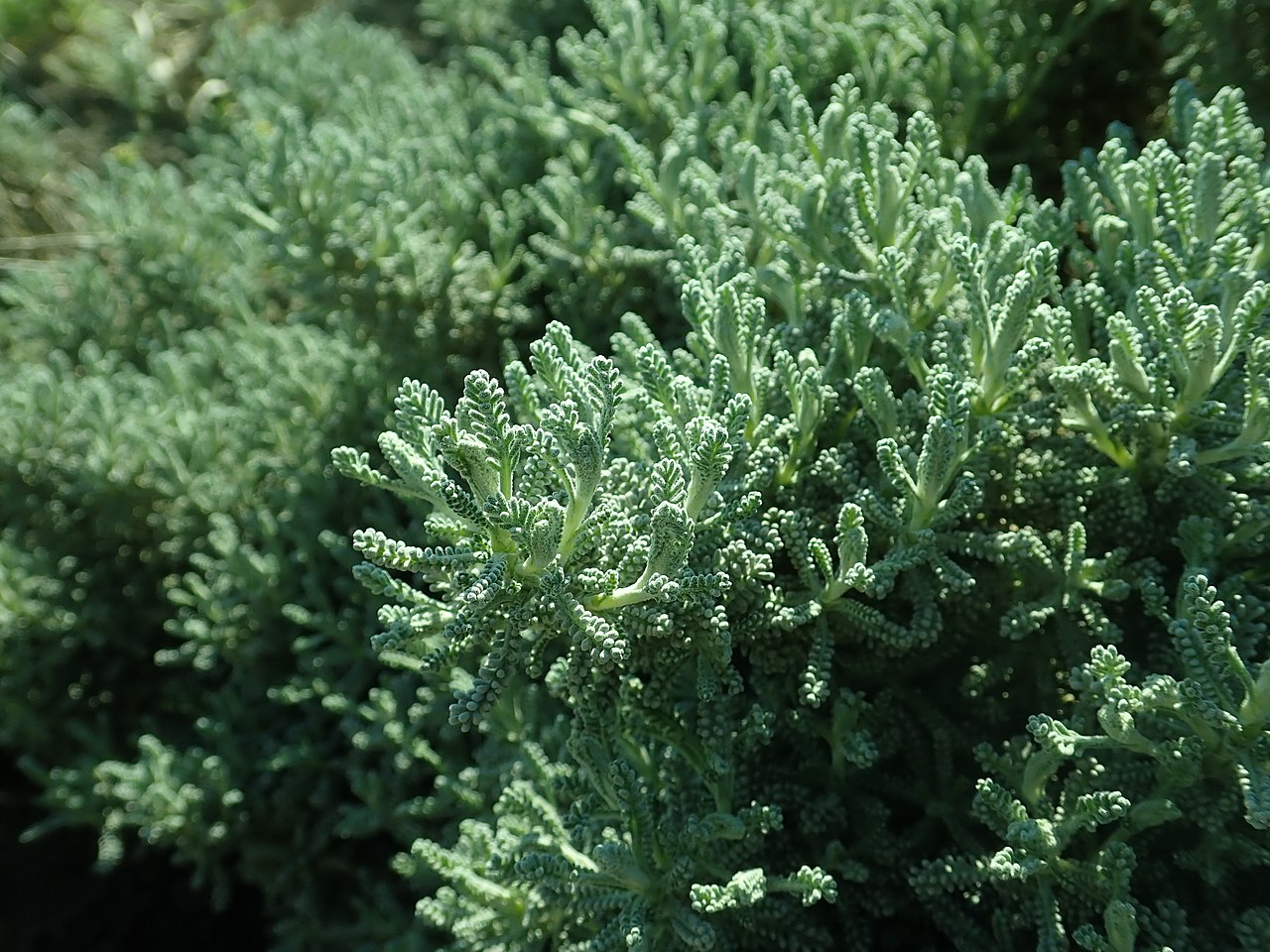
Image - Wikimedia / Salicyna
La Santolina rosmarinifolia it is a plant adapted to the dry conditions of many areas of the Mediterranean region. In fact, it is a very appreciated species in gardening, since it does not need a lot of water to grow, nor to flower. This makes it an ideal option for planting in xero-gardens for example, or even in pots placed in a patio since its adult size is small.
But yes, as a good Mediterranean plant, what you can never miss is the sun. You have to give it directly so that its stems grow correctly and so that, in addition, it can be healthy. Let's get to know it better.
Origin and characteristics of Santolina rosmarinifolia

Known by the common name of bonotera, the Santolina rosmarinifolia it is a perennial plant that grows in the western Mediterranean. Specifically, it lives in stony soils rich in sand, as well as dry rocky areas. It is also common to see it forming part of thickets composed of small herbaceous plants, such as the Cichorium intybus.
Reaches an approximate height of 40-50 centimeters. Its stems grow erect, and linear, elongated leaves with serrated margins sprout from them. These are green or gray-green on the upper side, and whitish on the underside, and have a rough texture.
It blooms from spring to summer. Its flowers are yellow, and are grouped in inflorescences called chapters, which are terminal (that is, after flowering both the flowers and the floral stem will wither) and solitary.
What are the care it requires?
Coir is a plant with a great capacity to adapt to regions where the climate is mild or hot, and dry. But this can be an inconvenience when we are in an area where it rains frequently, since it does not tolerate puddles. So with this in mind, let's know what your needs are:
Location
It is a heliophilic plant. This word means that requires direct sun for growth and development, like Dianthus (carnations) for example. Like them, when the rays of the star king do not reach it directly, its stems lose firmness and 'fall'.
If we talk about its roots, they are not invasive. In fact, it can be planted near other plants without problems. Leaving a separation of about 40 centimeters between them will suffice; although if your bonotera is already an adult, that separation may be less.
Earth

Image - Wikimedia / Salicyna
- Garden: in its places of origin it develops on siliceous soils. It lives well in those lands where there are a lot of stones, and little nutritional wealth.
- Flower pot: If you are going to have it in a pot, it is highly recommended that you choose an earthenware one with a hole in the base, since this way its roots will be able to 'hold' better to the walls inside the container, and the plant will then have the opportunity to grow stronger. As a substrate, choose one that absorbs and filters water quickly, such as black peat mixed with pumice or perlite in equal parts.
Irrigation
You may think that being a plant that resists drought very well, it does not want any water. But ... that is not entirely true, and less if you are going to grow it in a pot.
- Garden: the Santolina rosmarinifolia it will need to be watered from time to time (once or twice a week) during the first year it is in the garden so it can root well. After the irrigation will be sporadic.
- Flower pot: also, once or twice a week, but not only the first year, but always. Do not put a plate under it, otherwise the roots will rot.
Subscriber
If the bonnet is planted in the ground, it will not need to be fertilized. But if it is in a pot, yes, since over time the substrate runs out of nutrients. To avoid this, you can add guano or seaweed extract in liquid form, for example.
Remember to follow the instructions that you can read on the product packaging. And it is that, although they are organic fertilizers, this does not mean that there can be no risk of overdose. The best way to keep the roots safe and well fed is by adding the right amount of fertilizer, no more, no less.
Multiplication
La Santolina rosmarinifolia can be multiplied by seeds from spring to summer. For this, they must be sown in plastic seedling trays, or if you prefer, in conventional pots, with substrate for seedlings (for sale here) or with a universal one.
Cover them with a little substrate, and keep the soil moist (be careful, not waterlogged). Leave them in a sunny area, so the seedlings will get used to being exposed to the sun from the first day.
If everything goes well, you will see that they will germinate after ten to fifteen days.
Pruning
After flowering you can trim its stems a bit, keeping it rounded or globose.
Rusticity

Withstands cold and low temperatures of up to -18ºC.
What did you think of Santolina rosmarinifolia?